Table of Contents
Introduction
Knowledge on Global Warming and Its Effects on Agriculture
Global warming is among the most critical environmental concerns of our generation, with direct impacts on agriculture, food security, and rural livelihoods in India.
Global warming simply means the steady increase in the average temperature of the Earth, caused mainly by a rise in greenhouse gas emissions due to human activities like industrialization, deforestation, and the combustion of fossil fuels.
Agriculture depends heavily on weather, so it is highly vulnerable to these changes. Increased temperatures, irregular rainfall, and climatic extremities pose a great threat to crop cultivation, soil fertility, and water availability.
The reasons behind climate change, such as releases of carbon dioxide, methane, and nitrous oxide, have been strengthened during the last decades. These transformations have led to changes in growing seasons, a decline in soil fertility, and increased pest and disease pressures.
These factors threaten agricultural sustainability in India. It is important to appreciate the impact of climate change on agriculture to be able to embrace viable strategies.
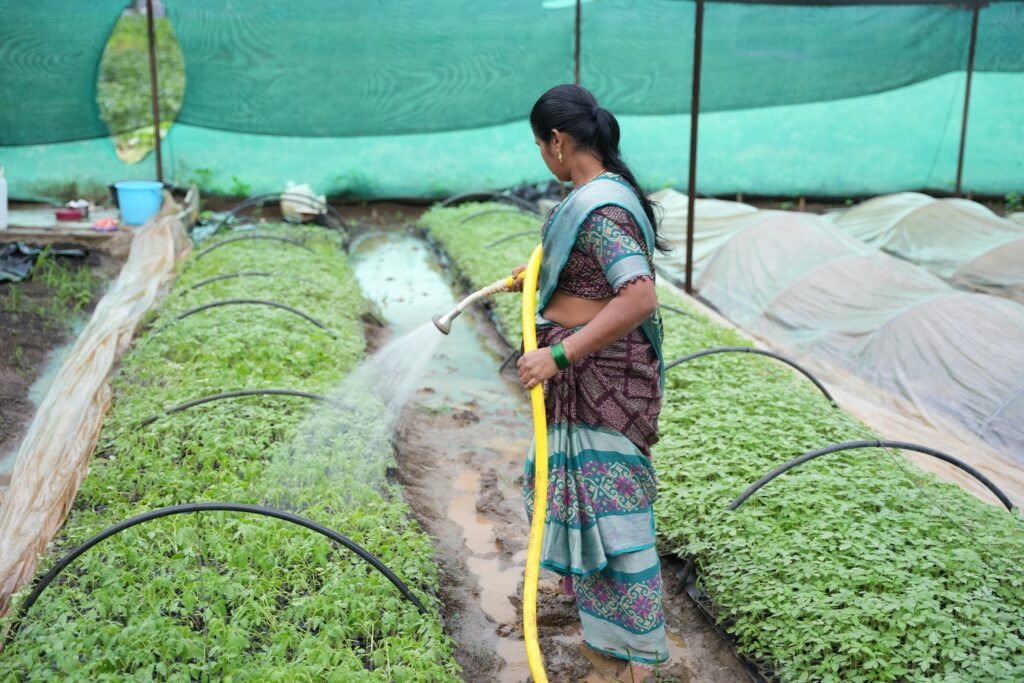
For example, unpredictable monsoons in eastern and central India have already caused a disruption to the sowing and harvesting plans of staple grains such as rice and wheat. Farmers are now required to respond to these threats in climate-resilient farming practices to ensure productivity and safeguard livelihoods.
The Imperative of Climate-Resilient Agriculture in India
India is a country with an agrarian economy where the livelihoods of most of its population depend on agriculture for employment and livelihood.
As global warming is increasingly becoming a reality, it becomes imperative to adopt climate-smart measures that can buffer the negative impacts of extreme weather conditions, soil erosion, and water shortage.
Agricultural resilience not only guarantees food security but also enhances economic stability and rural development.
Climate-resilient agriculture emphasizes building the adaptive capacity of agricultural systems by practicing efficient water management, soil conservation, diversification of crops, and the use of modern technologies.
For instance, using drought-resistant crop varieties and rainwater harvesting technologies enables farmers to adapt more to unpredictable rainfall.
In the same manner, transition from traditional tillage practices to conservation agriculture decreases soil loss and increases organic carbon stock, and thus counteracts some climate change consequences. By learning about the causes of climate change as well as the available effective interventions, Indian farmers can address the impacts of global warming proactively.
These measures are not only cost-effective environmentally but also economically, since they minimize reliance on expensive chemical inputs and enhance farm productivity in the long term.
Advantages of Climate-Resilient Agriculture
Increased Food Security
The greatest advantage of climate-resilient agriculture is increased food security. Global warming has already caused crop production to change its pattern in India, putting staple foods like rice, wheat, and pulses at risk.
By using resilient farming methods, farmers are able to regularize production levels in spite of fluctuating climatic conditions. Methods like diversification of crops, intercropping, and the use of heat-tolerant or drought-tolerant varieties assist in ensuring consistent production.
For example, farmers in Rajasthan’s semi-arid tracts have made bajra and jowar millets an integral part of regular cropping systems. These crops are less water-intensive and can withstand excessive heat, such that food availability is maintained even during times of unstable rainfall.
Enhancing food security through climate-resilient agriculture also means less dependence on imports, more resilient local economies, and nutritional security.
Through the adoption of solutions that are specific to the local environments, farmers are able to sustain productivity while lessening the adverse impacts of global warming.
Further, practices like organic manure application, crop residue management, and minimum chemical inputs enhance soil fertility and bring about stability in yields in the long term.
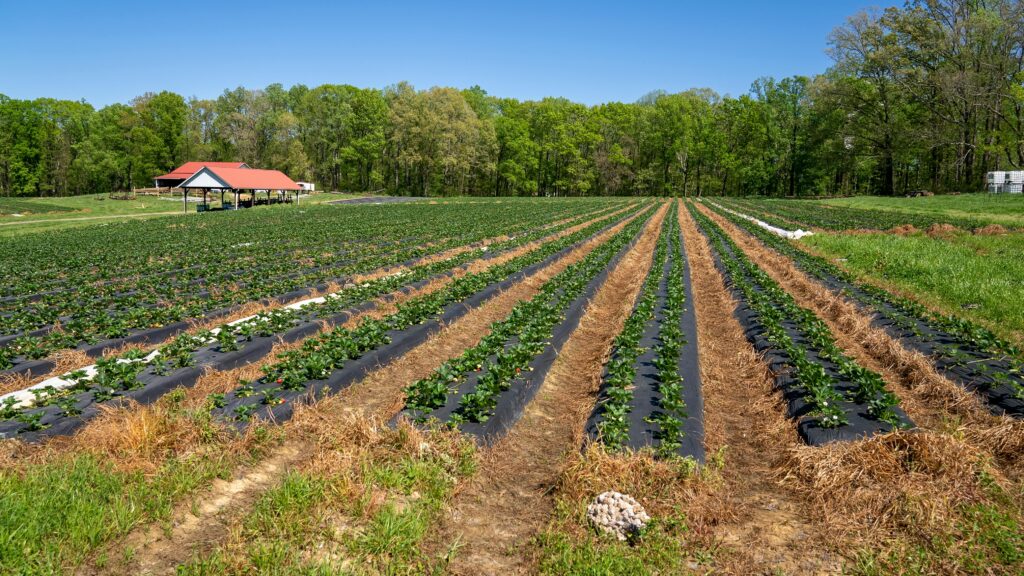
Appreciation of such benefits makes farmers and policymakers invest in adaptive options, thereby securing livelihoods and enhancing India’s agriculture resilience.
Economic Stability for Farmers
Global warming and the consequent impacts of climate change have provided erratic economic returns to farmers, frequently resulting in crop loss and revenue loss.
Climate-resilient agriculture contributes directly to economic stability by lowering the risk of damage from extreme weather conditions and guaranteeing more stable production cycles.
For instance, using water-efficient irrigation methods such as drip or sprinkler systems lowers losses during times of drought and lowers input expenses related to water waste.
In the same way, integrated pest management ensures management of pest outbreaks without depending on costly chemical pesticides, reducing cost of production.
Through enhanced farm resilience, farmers gain increased returns and reduce financial risks. Crop insurance programs, backed by climate-smart interventions, also insulate farmers from losses resulting from natural disasters associated with global warming.
Diversification to high-value crops, agroforestry, and incorporation of livestock generates various income sources, breaking reliance on one crop.
These measures, in the long run, improve sustainable rural livelihoods where communities can withstand altered climatic conditions as well as continue economic development.
The economic value of climate-resilient agriculture coupled with environmental sustainability presents an impressive argument for its rampant adoption on India’s vast agricultural zones.
Environmental Sustainability
A second very important advantage of climate-resilient agriculture is the development of environmental sustainability. Conventional methods of farming, especially those that greatly depend on chemical fertilizers and monoculture systems, tend to worsen the impacts of global warming.
Soil erosion, the depletion of groundwater, and the release of greenhouse gases are some of the results of unsustainable farming practices.
As a contrast, climate-smart practices like conservation agriculture, agroforestry, and organic agriculture replenish soil health, save water, and capture carbon, reducing the environmental footprint of agriculture.
For example, cover crops and mulching decrease soil erosion, retain water, and reduce surface temperatures, enabling crops to withstand heat stress.
Agroforestry systems, in which crops are mixed with trees, not only supply shade and protection from the wind but also serve as carbon sinks that draw down levels of greenhouse gases in the atmosphere.
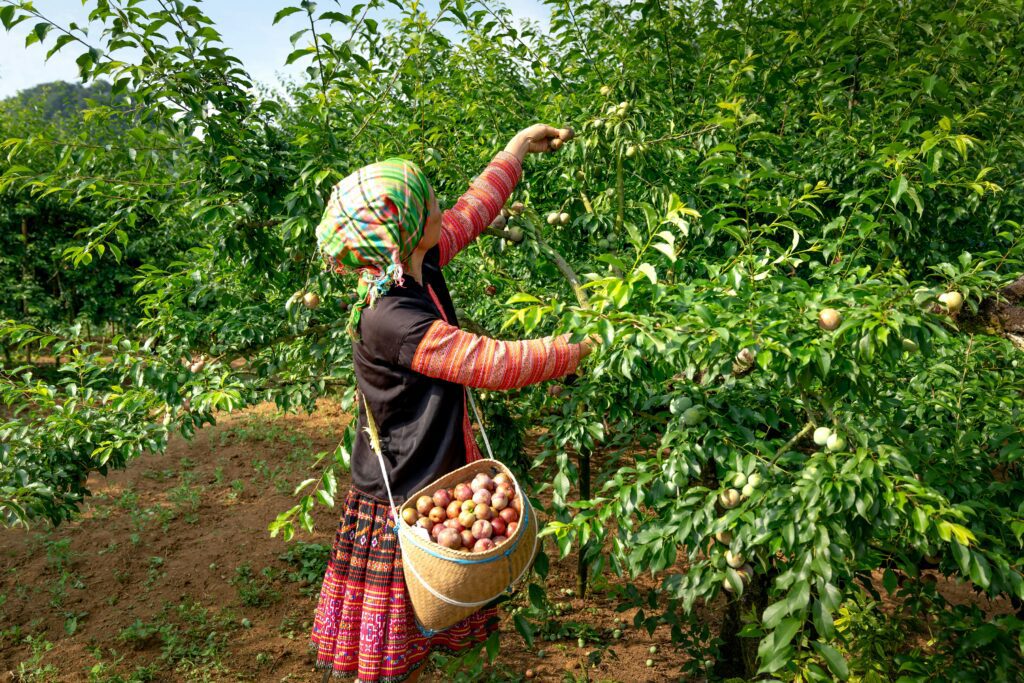
Sustainable agriculture thus forms a virtuous feedback loop: healthier ecosystems promote greater crop productivity, which in turn enhances the resilience of communities to the impacts of climate change.
By appreciating these environmental advantages, farmers can make their farming practices both economic and ecological, targeting the root causes of climate change while adjusting to its impacts.
Methods for Constructing Climate-Resilient Agriculture
Conservation Agriculture
Conservation agriculture is one of the central methods of constructing resilience against global warming. It aims at reducing soil disturbance, having a permanent cover on the soil, and increasing crop rotation diversity.
By minimizing tillage, farmers can maintain soil structure, enhance water infiltration, and retain organic matter, which is critical for nutrient cycling and sustained soil fertility.
For instance, in some of Punjab and Haryana, zero-tillage wheat systems have enabled farmers to hold soil moisture, minimize labor expenses, and sustain productivity even in the face of unreliable rainfall patterns.
Cover crops such as legumes or grasses prevent soil erosion and naturally keep weeds in check. Crop rotation and intercropping avoid nutrient depletion and disrupt pest and disease cycles, minimizing the application of chemical fertilizers and pesticides.
Conservation agriculture also helps curtail greenhouse gas emissions by allowing carbon sequestration in soils, combating the impacts of climate change directly.
By integrating these practices, Indian farmers can increase productivity, minimize exposure to climatic fluctuations, and have a more sustainable agricultural system capable of responding to the impacts of global warming.
Water Management Techniques
Effective water management is essential for climate-resilient agriculture, particularly in areas with droughts and sporadic rains. Methods like drip irrigation, sprinklers, and rainwater harvesting enable farmers to maximize water utilization, providing the crops with the right amount of water without wastage.
Drip irrigation delivers water straight to the roots of plants. This method cuts down on evaporation losses and promotes better crop growth.
For example, in the state of Maharashtra, farmers growing sugarcane through drip systems have achieved 40% savings in water usage and increased yields compared to conventional methods of flood irrigation.
Rainwater harvesting, farm pond and check dam construction, and mulching with organic material such as straw or crop residues retain surplus water during rainy season for use later on, providing protection against drought.
Mulching keeps soil moist and regulates soil temperature. This reduces heat stress on the crops. These water-efficient practices not only enhance the resilience of crops but also reduce costs of production and enhance long-term sustainability.
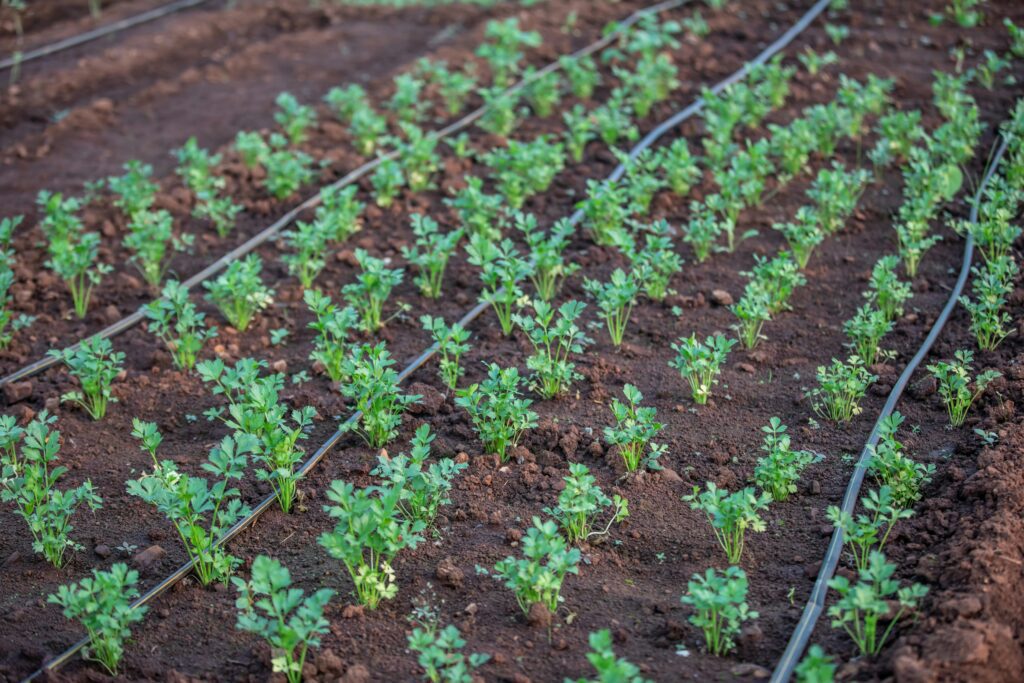
Good water management enables farmers to cope with the impacts of climate change while avoiding overexploitation of groundwater resources, making agriculture more climate-resilient against global warming.
Climate-Smart Crop Varieties
Using climate-smart crop varieties is also a crucial method to reduce the impact of climate change. Such varieties are developed to be resistant to heat, drought, floods, and salinity, which are becoming more frequent as a result of global warming.
For instance, drought-resistant rice cultivars such as Sahbhagi Dhan and flood-resistant rice varieties produced by the International Rice Research Institute (IRRI) have been successfully brought into India for stabilizing production during unfavorable weather conditions.
Likewise, heat-tolerant wheat and millet varieties enable farmers to adapt to increasing temperatures without compromising the quality of the grain.
Their inclusion in the farming systems makes it possible to achieve more flexibility in adapting to uncertain climatic conditions. Combined with effective water and soil management, climate-resilient crops minimize risks of crop failure and improve food security.
Farmers are also incentivized to diversify their crops, which mix cereals, pulses, and oilseeds, spreading risk and ensuring constant streams of income. All these measures combined help develop farming systems that are not merely productive but also resilient to the long-term effects of global warming.
Agroforestry and Integrated Farming
Agroforestry, the cultivation of trees with crops and animals, is an effective method for constructing climate-resilient agriculture. Trees cast shade, mitigate wind erosion, contribute to soil fertility through leaf fall, and serve as carbon sinks, directly combating global warming.
In India’s southern states, farmers integrating coconut or mango trees with intercrops such as turmeric, ginger, or vegetables have seen increased overall productivity and improved resistance to heatwaves and unpredictable rainfall.
Integrated farming systems integrate crop farming, livestock production, aquaculture, and horticulture, providing diversified sources of income and minimizing reliance on one crop.
This diversification distributes risk, promotes soil enrichment using manure application, and enables optimal utilization of farm resources. Rice-fish integrated systems, for instance, not only enhance farm income but also enhance nutrient cycling and pest management.
Through the use of agroforestry and integrated farming methods, Indian farmers can mitigate vulnerability to climate stresses, enhance economic stability, and promote environmental sustainability, creating a comprehensive solution to the issue of global warming.
Challenges Facing Climate-Resilient Agriculture
Limited Awareness and Knowledge
A major challenge to the adoption of climate-resilient agriculture in India is limited awareness and knowledge about it among farmers.
While climate change and global warming are extensively debated at policy and research levels, most smallholder farmers do not have access to hands-on information regarding adaptive measures.
Old customs, frequently passed along from generation to generation, can be inadequate in responding to rising heatwaves, droughts, or irregular monsoons.
Farmers might not be familiar with climate-smart crops, water-saving irrigation, or conservation agriculture technologies, which reduces their capacity to act in response to changing circumstances.
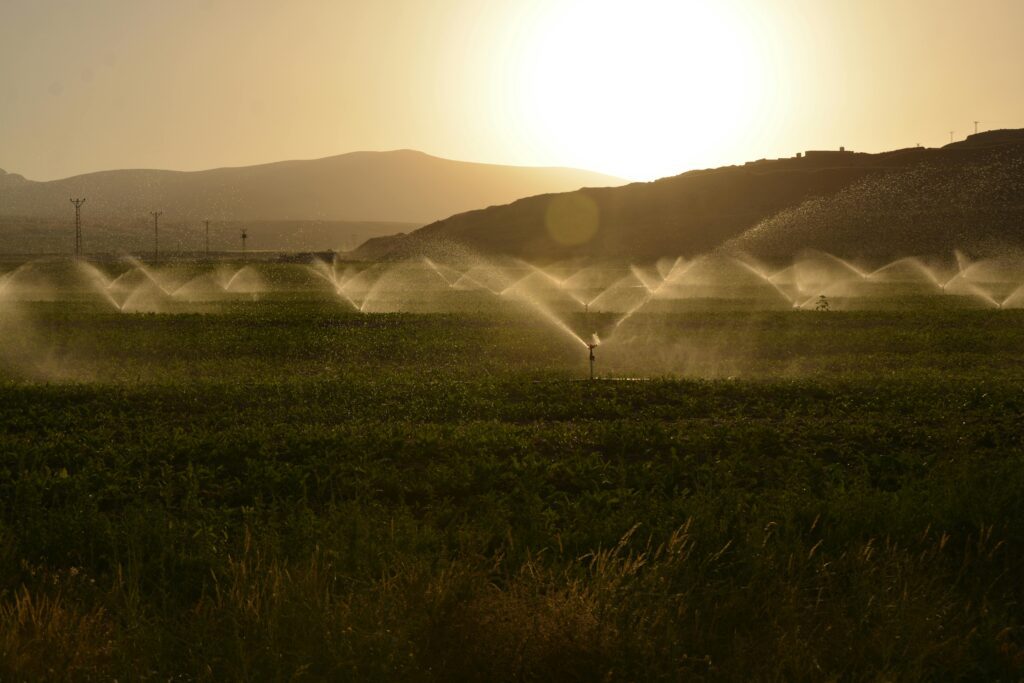
Extension programs, training workshops, and government policy have tried to make up for this gap, but their coverage is still inadequate, especially in outlying rural villages. Language differences, literacy levels, and restricted access to digital technologies often complicate the translation of scientific information.
Lack of focused awareness campaigns and demonstration projects on the ground, most farmers remain dependent on traditional methods susceptible to global warming.
Filling this knowledge gap is most essential to the universal adoption of climate-resilient agriculture and allowing the farmers to learn not only the causes of climate change but also the cost-effective measures required to address its impacts.
Financial Constraints
Financial limitations are another big hurdle in constructing climate-resilient agriculture. The adoption of advanced methods like drip irrigation, rainwater harvesting, climate-smart seeds, or soil conservation techniques involves initial investments, which are beyond the means of most small and marginal farmers.
Government schemes and subsidies are available, but application procedures are complicated, and the benefits do not percolate to all the farmers uniformly.
In addition, the possibility of crop loss as a result of uncertain weather conditions deters farmers from investing in advanced technologies.
For example, a farmer might be reluctant to invest in high-yield drought-resistant rice strains if the next monsoon is doubtful, lest he suffer financial losses. Access to low-cost credit, crop insurance, and financial literacy is thus essential to empower farmers to make investments in adaptive strategies.
Lacking adequate financial funding, climate-resilient agriculture continues to be a dream and not a feasible solution, keeping farmers vulnerable to the negative impacts of global warming and other elements of climate change.
Infrastructure and Resource Limitations
Infrastructure and resource constraints constrain the uptake of climate-resilient agriculture in India substantially. Inadequate irrigation systems, poor storage facilities, and insufficient transport networks lower the efficacy of new methods.
For instance, even when a farmer embraces water-saving irrigation, inadequate electricity supply or poor pump maintenance can hinder regular water supply. Likewise, low levels of cold storage and godown facilities raise post-harvest losses, lowering the profitability of adopting resilient crop varieties.
These gaps in infrastructure and resources are further worsened by shortages of quality seeds, organic fertilizers, and trained manpower. Soil degradation and groundwater level decline are also common in most regions, which further add to the impact of global warming on agriculture.
The government, private sector stakeholders, and local communities must work together to address these gaps in infrastructure and resources.
By enhancing physical infrastructure and making inputs necessary for agriculture available, farmers can better adopt climate-resilient measures and reduce the impacts of climate change.
Policy and Institutional Barriers
Policy and institutional constraints also present challenges to climate-resilient agriculture. Decentralized policies, inconsistencies in the working of departments of agriculture, and lack of coordinated approach in implementing schemes may discourage farmers from adopting adaptive measures.
Certain policies give undue emphasis to traditional high-input agriculture at the expense of sustainable, climate-smart practices, thereby encouraging those practices that lead to global warming.
In addition to this, institutional arrangements like extension services, research and development centers for agriculture, and training programs could be focused in urban or developed areas, leaving behind the poor and marginalized communities.
Legal and regulatory environments, such as security of land tenure and availability of water resources, further complicate the adoption of new techniques.
It is necessary to address these barriers through inclusive policymaking, stringent implementation mechanisms, and effective coordination between government, non-governmental organizations, and farmer cooperatives for facilitating sustainable, climate-resilient agriculture in India.
Solutions for Climate-Resilient Agriculture
Adoption of Climate-Smart Farming Practices
Climate-smart agriculture is a bedrock solution to combat global warming’s impacts on agriculture. Climate-smart farming practices entwine traditional knowledge with scientific approaches to build resilience.
For instance, zero-tillage farming, intercropping, crop rotation, and application of organic manure improve soil fertility and water holding capacity greatly.
The agriculturalrists in Karnataka and Andhra Pradesh have embraced the following best practices to curtail soil erosion, conserve nutrient levels, and ensure stable yields under erratic rainfall.
Climate-smart agriculture also entails the application of precision agriculture technologies like soil moisture monitoring, GPS-guided machinery, and weather monitoring systems.
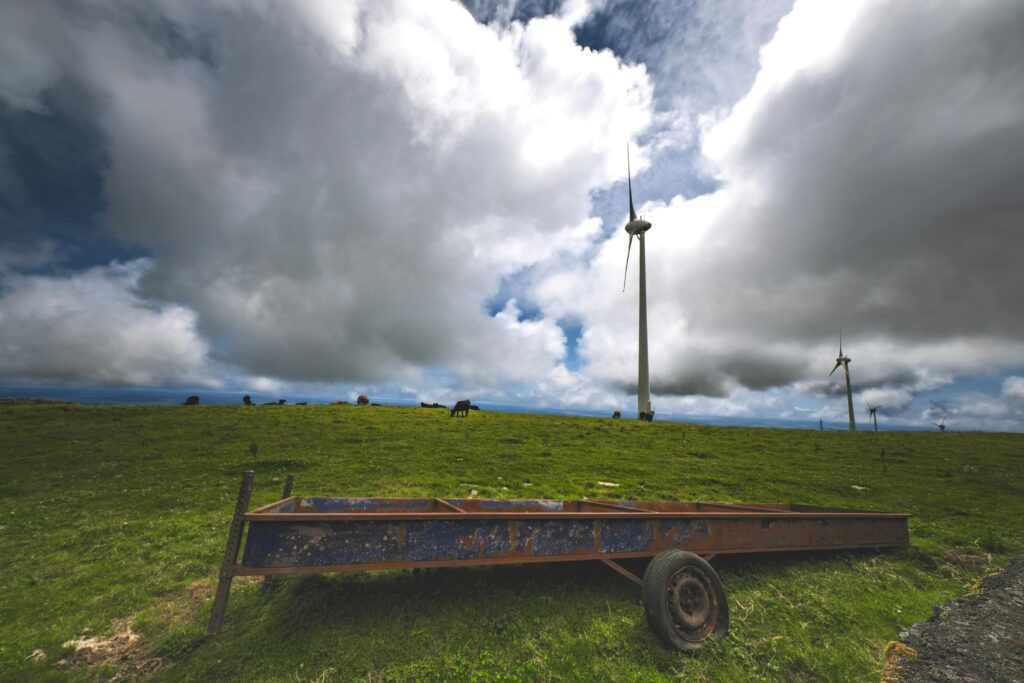
These technologies enable farmers to make informed decisions, maximize the use of resources, and minimize crop damage from unpredictable climatic conditions.
Farmers adopt climate-smart agriculture to not only limit the adverse impacts of climate change but also maximize productivity, minimize input costs, and ensure environmental sustainability. This integrated strategy makes agriculture viable and sustainable, even during the challenges posed by global warming.
Enhanced Water and Soil Management
Practical water and soil management practices are critical measures for climate-resilient agriculture. Practices like drip and sprinkler irrigation, rainwater harvesting, and constructing farm ponds provide the maximum utilization of available water, reducing risks of droughts.
Mulching, cover crops, and organic composting enrich soil condition by ensuring moisture retention, enhancing nutrient value, and limiting erosion.
For example, Maharashtra’s Marathwada farmers have integrated mulching with rainwater harvesting to safeguard crops during droughts, leading to more reliable yields amidst variable rainfall.
Soil conservation practices like contour farming, terracing, and agroforestry avoid degradation and enhance carbon sequestration, both preventing and mitigating the impacts of climate change. Proper soil health ensures efficient fertilizer use, lowers chemical use, and promotes sustainable plant growth.
Through effective water and soil care, Indian farmers can establish long-term resistance against global warming, sustaining food security and environmental sustainability at the same time.
Leveraging Technology and Innovation
Innovation and technology play important roles in supporting climate-resilient agriculture. Sophisticated technologies such as satellite imagery, remote sensing, and mobile-based advisory services enable farmers to track the health of their crops, anticipate pest infestations, and schedule sowing and harvesting times with greater precision.
In Punjab and Haryana, online platforms provide farmers with real-time weather forecasts, irrigation tips, and market prices. This information helps them reduce risks from climate changes.
Tools like drought-resistant seeds, salt-tolerant crops, and improved plant varieties assist farmers in dealing with tough weather without losing productivity. Mechanization and automation cut down on labor dependence, increase efficiency, and aid precision farming practices.
Data-based solutions also enable policymakers to map vulnerable areas and create focused interventions, which makes technology a central facilitator of climate-smart agriculture. Seizing innovation guarantees that Indian farmers can react in anticipation to global warming and the larger impacts of climate change.
Strengthening Policy Support and Incentives
Strong policy mechanisms and incentives are important for supporting climate-resilient agriculture. Governments may offer subsidies on water-saving irrigation equipment, climate-smart seeds, and organic products to promote adoption by smallholder farmers.
Crop insurance programs can help farmers against loss due to extreme weather conditions, minimizing financial exposure and encouraging investment in adaptation measures.
In addition, research, extension service, and farmer training programme policies can enhance information and awareness regarding climate-smart methods.
Coordination between the central government and states, NGOs, and private sector stakeholders guarantees resource and technology access for marginalised areas on an equal basis.
Creating an enabling policy framework will help India achieve large-scale uptake of climate-resilient agriculture practices, reduce global warming effects, and establish a sustainable, future-proofed agricultural system.
Community-Based Interventions and Capacity Development
Community-based interventions and capacity development are critical to making climate-resilient agriculture a success. Farmer cooperatives, self-help groups, and local resource centers create platforms for learning, collective action, and leveraging shared resources.
For instance, in Kerala, farmer groups come together to undertake watershed management schemes, rainwater harvesting, and organic farming, strengthening resilience at the community level.
Capacity development initiatives, such as on-the-job training, farm demonstrations, and farmer-to-farmer networks, empower communities with the technical abilities to implement adaptive measures.
These activities also facilitate local innovation, allowing farmers to test drought-resistant varieties, integrated pest management, and low-cost irrigation technologies.
Through the enhancement of social networks and local capacities, community-led actions make climate-resilient agriculture a people-centered and sustainable remedy to the problems presented by global warming and the impacts of climate change.
FAQs on Global Warming and Climate-Resilient Agriculture
1. What is global warming, and how does it impact agriculture in India?
Global warming is the progressive rise in Earth’s mean temperature as a result of the accumulation of greenhouse gases such as carbon dioxide, methane, and nitrous oxide. Global warming impacts agriculture in India by triggering erratic rainfall, temperature elevation, and weather extremes.
These alterations interfere with crop growth, decrease soil fertility, enhance pest and disease infestation, and undermine food security. The application of climate-resilient farming practices can assist farmers in coping with these constraints while maintaining productivity.
2. What are the primary drivers of climate change in agriculture?
The reasons behind climate change are human activities like deforestation, fossil fuel combustion, industrial pollution, and intensive farming.
Excessive application of chemical fertilizers, methane release from rice fields, and cattle emission of greenhouse gases are prominent causes of climate change in agriculture.
Farmers can lower their environmental impact and check the impacts of global warming by following environmentally friendly techniques like organic farming, agroforestry, and optimum irrigation.
3. What are the manifestations of the impacts of climate change on Indian agricultural systems?
The impacts of climate change on Indian agriculture are irregular patterns of rainfall, extended droughts, crop heat stress, soil erosion, and enhanced frequency of floods and cyclones. These impacts lower the productivity of crops, decrease farm revenues, and jeopardize food safety.
Farmers are implementing climate-resilient practices like drought-resistant crops, conservation agriculture, and harvesting rainwater to manage these problems and develop resilience against global warming.
4. What are some effective solutions for establishing climate-resilient agriculture in India?
Effective solutions involve adopting climate-smart agricultural practices, enhancing water and soil management, maximizing the use of modern technology and innovation, and enhancing policy support.
Initiatives at the community level, training programs for farmers, and crop diversification also improve resilience. Collectively, these measures help address the impacts of climate change, stabilize crop yields, and promote sustainable livelihoods while countering global warming.
5. Are small-scale farmers helped by climate-resilient practices?
Yes, smallholder farmers can greatly gain from climate-resilient agriculture. Drip irrigation, mulching, intercropping, and planting climate-smart crop varieties are cost-efficient and scalable.
Crop insurance, subsidies from government institutions, and community schemes can help make these practices affordable for small-scale farmers.
Through these steps, smallholder farmers can mitigate risks of extreme weather, sustain productivity, and enhance their economic resilience despite global warming’s challenges.
Conclusion
Global warming is a major threat to Indian agriculture, affecting food security, livelihoods for farmers, and environmental sustainability.
The drivers of climate change, such as greenhouse gases emitted during industrial, transport, and agricultural processes, have increased over time, resulting in the impacts of climate change like rainfall, heat stress, soil loss, and increased pest pressure.
These issues require immediate consideration and anticipatory effort to see to it that farm systems continue to be productive, sustainable, and resilient.
Constructing climate-resilient agriculture entails embracing a set of measures such as the application of climate-smart agriculture, water and soil-efficient management, adoption of resilient crop types, agroforestry, and integrated farming systems.
Harnessing technology, enhancing policy support, and encouraging community-oriented initiatives further enhance farmers’ capacity to adapt to climatic shocks.
These measures not only help curtail the impacts of global warming but also ensure economic stability, environmental sustainability, and sustainable food security for rural communities in the long run.
Indian farmers, policymakers, and stakeholders must work together to implement these strategies at scale. Small steps like switching to drought-tolerant crops, practicing organic farming, conserving water, and utilizing digital advisory tools can collectively make a significant difference.
By embracing climate-resilient practices today, India can safeguard its agricultural future, reduce vulnerability to climate risks, and contribute meaningfully to global efforts against climate change.
Acting now makes agriculture continue to be a source of livelihood as well as the foundation of sustainability against global warming.
